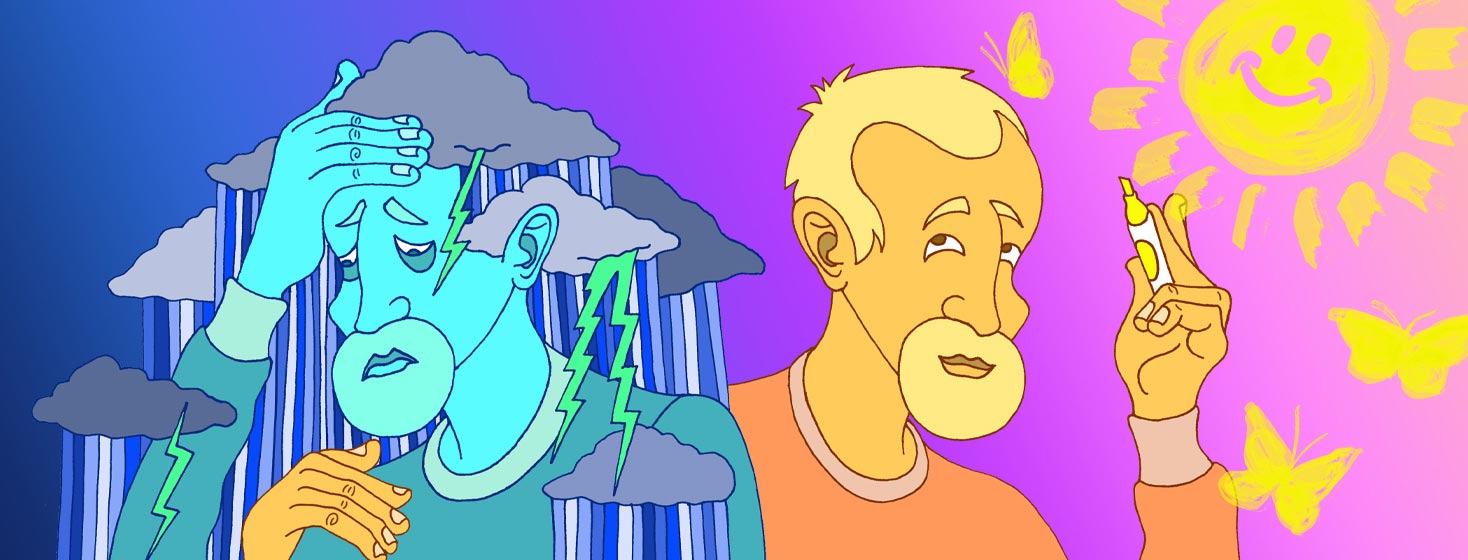Negative Thinking: A Barrier To Managing Parkinson’s
In our society, acute or chronic illness is often managed through medication. Many of us have come to rely on the idea "there’s a pill for that." I recently took a survey on self-efficacy and chronic disease. The last question really struck home. "Medications aside, how confident are you that you can do things to reduce how much your chronic disease affects your everyday life?"
With Parkinson’s, medications typically just mask the symptoms, and the symptoms are still progressing to the point where we may need more meds. Almost everything else, including exercise, is based on the patient actively doing something mentally and physically.
Positive thinking and quality of life
Studies have demonstrated that positive thinking improves quality of life and has a therapeutic role in managing chronic disease. In Parkinson’s, positive thinking can be a key element in the patient going beyond just depending on medication.1,2
Creating and maintaining a positive attitude is an initial first step. You can’t wish yourself into a positive attitude. Unlike taking a pill, work is required.
Examples of negative thinking
Negative thinking, however, is a barrier to having a positive attitude. Therefore, eliminating or minimizing negative or unhelpful thinking is a key element in having a positive attitude. Negative thinking is a also major element in depression and apathy. During the course of a day, how many of us have had thoughts like:
"If I’m not perfect, I’ve failed. Either I do it right or I won’t do it at all." (All or nothing thinking)
"That doesn’t count." (Discounting good things that have happened)
"This is my fault or this is your fault." Blaming yourself or someone else when it’s a gray matter. (Personalization)
"I’m a loser ... I’m a Parkie ... They are useless." (Labeling)
"Nothing good ever happens ... everything is crap." (Over-generalizing)
Other negative behaviors
In addition to the thoughts above, how many of us have done things like:
- Magnify situations by blowing them out of proportion
- Use critical words, like "should," "ought," or "must," causing feelings of guilt or failure
- Jump to conclusions, imagine we know what others think, or that we can predict the future
- Notice our failures but cannot see our successes.
My process to eliminate unhelpful thoughts
Through research and therapy, I’ve found a process that helps me minimize or eliminate my negativity or unhelpful thinking.
First, I keep a log of the types of negative thinking I use in a day. For example, today I used labeling and all or nothing.
Next, I take those examples and restate them. For example, "I’m a Parkie," becomes "I have Parkinson’s." Clearly, you are more than a person with Parkinson’s. "I can’t do exercise because I can’t do it perfectly," becomes "I haven’t exercised in a while so improvements come with repetition and time."
In real time or immediately after, I rephrase my negative thoughts in a positive way. Finally, I repeat and repeat.
My result
Over the span of several weeks, I noticed a marked decrease in my negative thinking. Less negative thinking, over the course of a month or more, made me feel more positive. There have been slip ups and reversion into old habits. When they occur, I get out the log sheet and get back to the basics for a few days.
Find the method that works for you. You can feel better about your situation or yourself by becoming a more positive person.

Join the conversation